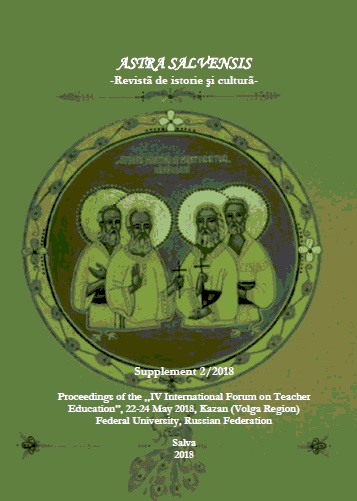DIDACTIC MODEL FOR MANAGEMENT OF INFORMATION AND COMMUNICATION TECHNOLOGIES APPLICATION IN TEACHER TRAINING AND QUALIFICATION IN BULGARIA
DIDACTIC MODEL FOR MANAGEMENT OF INFORMATION AND COMMUNICATION TECHNOLOGIES APPLICATION IN TEACHER TRAINING AND QUALIFICATION IN BULGARIA
Author(s): Daniela T. KozhuharovaSubject(s): Social Sciences
Published by: Asociaţiunea Transilvană pentru Literatura Română şi Cultura Poporului Român - ASTRA
Keywords: ICT; model; teachers training; classroom management;
Summary/Abstract: Fast development of informational and communicational technologies (ICT) poses many challenges and problems to education. It is necessary to adapt the existing training models according to different technologies. It also creates the necessity for an adequate qualification of teachers and proper teacher training. The purpose of this paper is to present the comprehensive Didactic Model for classroom management with the help of the application of specialized software Mythware Classroom Management and the summarized outcomes from its application in the field of teacher training and qualification. A training experiment was conducted to establish the effectiveness of the implementation of specialized software for classroom management in the learning process. The training was attended by teachers from different disciplines who were participating at the time in a qualification training to become certified as a ‗teacher of Informatics and Information Technologies‘ for junior and high schools in DIITT (Department for Information and In-service Teacher Training) at Trakia University for qualification. There were two groups (experimental and control) participating in the training. For the training of the experimental group I used specialized classroom management software and for the training of the control group – some traditional training methods. The development and adaptation of the model supports in-service teacher training and, therefore, more effective work on the implementation of information and communication technologies in the training process.
Journal: Astra Salvensis - revista de istorie si cultura
- Issue Year: VI/2018
- Issue No: Supp 2
- Page Range: 199-210
- Page Count: 12
- Language: English

